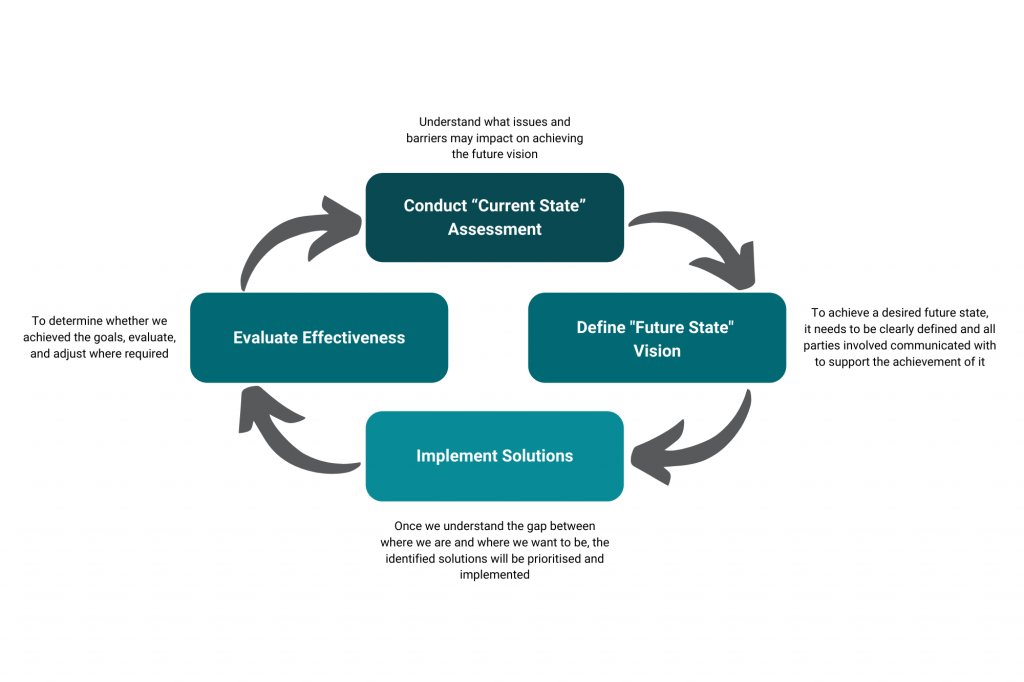Implementing an Account Management Strategy to Leverage your Existing Customers to Grow your Business
When I start working with a new client as their business coach or consultant, they tend to want to jump straight into how they will use marketing to grow their business. That’s where the money lies when we are looking at growth… isn’t it? They often ask ‘should I invest in paid advertising?’ or ‘do I need SEO?’ or ‘does my website need to be updated?’. ‘Whoa boy!’ as I pull on the reigns! Because although these are great and valid questions, most of the time, we can make more money, with less time, and less money; and who doesn’t want that?
More money in less time? You better believe it!
If you do want that, stick with me as I explain the best ways to leverage your existing customers to grow your business.
Let’s be clear – marketing is important, especially if your goal is to grow your business. But when I ask my clients what their Account Management Strategy is and they stare at me blankly, that is a dead giveaway that we could be potentially leaving a lot of money on the table.
Just before we go on, let me just check in… are you too currently staring blankly at your screen wondering what the heck an ‘Account Management Strategy’ is? Are you secretly happy to have found this blog post before consulting a business coach, and spared the awkward moment of a real-life blank stare moment? You’re in exactly the right place. At the end of this blog, you’ll have three simple yet effective actions to get you on your way to creating, executing and making money from your Account Management Strategy.
What is Account Management?
At its simplest level, Account Management is just looking after your existing clients or customers. It’s about showing them great customer service, checking in with them, asking how they’re doing and what’s going on in their business and lives.
So… let me ask you; which existing clients are on your call list this week? Cue blank stare number two, and perhaps an added ‘say…say what… who… huh?!’ A call list simply means which of your existing or past clients you’re going to call this week or month.
Strategic Account Management, is a bit more complicated.
So, before we get into the details, let’s talk about what strategy actually is. Simply put, a strategy is a framework or roadmap for making decisions. A good strategy outlines how your goals will be achieved through specific steps. It’s a handy way to get out of your head and make the best decisions to achieve your business vision and goals.
A simple strategy consists of four main elements: conducting a ‘current state’ assessment; defining your ‘future state’ vision; implementing solutions, and evaluating effectiveness.
Strategic Framework

So how does this strategic framework apply to your strategic account management? In a nutshell, strategic account management involves looking at where your business and current or past clients are, where you would like to be in terms of your revenue / profit / relationships etc. and formulating plans to get there. How? Well help your customers solve their problems or challenges and ultimately assisting them with achieving their goals, and you will achieve yours. Simple, right? Right. Now let’s move on to the why of it all.
Why is Account Management Important?
When I’m called in as a business consultant, my clients usually have a budget in place for new business marketing. The focus is often on the new shiny client. Thing is, sometimes new is not better especially when businesses have forgotten about making plans to:
- Maintain relationships with existing clients;
- Leverage new business from existing clients;
- Ask for referrals from existing clients;
- Reengage past clients;
- Be able to ‘step up’ your services, e.g. higher values offers or more products and services that are in alignment with your customer’s goals.
- Strategically position themselves as long-term partners to help their clients achieve their goals.
So why is Account Management important? The simple answer: it costs you nothing to get something! Here are three actual examples of my clients who have leveraged their existing clients / customers to make more money.
Example 1
- Client A sends an email to 7 contacts within an organisation they work with. These emails are sent to check in or perhaps provide a handy piece of content, and Client A gets 5 jobs from their efforts (totalling around $30k).
Example 2
- Client B calls a contact, suggesting that if this contact takes Package B (instead of pay-as-you-go Package A), they will solve problems x-y-z. That contact signs on and Client B suddenly has 12 months guaranteed revenue (totalling an extra $6k per year).
Example 3
- Client C enquires what plans their contact has for the next 12 months. Client C can, of course, help them execute those plans. Client C then successfully sells a new scoping and system implementation (totalling around $55k).
Let’s go over those figures again: $30k for Client A, $6k for Client B and $55k for Client C. Now let’s calculate what the cost of acquisition of that was…
- Client A – 15 minutes to write and send the email
- Client B – a 30-minute phone call
- Client C – 2-hour meeting, inclusive of the proposal, handshake and invoicing time
After knowing that that, do you still want to spend a fortune on new business marketing? It costs you almost nothing to leverage business from your existing relationships, even if you’ve only got one contact to start with. This method only costs time and dedicated thinking space, which can often be the biggest challenge with being a small business owner – trust me, I get that! However, if you have an idea of your customer acquisition cost, and if you understand the return on your investment with existing accounts, you’ll find that leveraging your existing customers brings great rewards.
Why Don’t we Want to Manage Our Existing Customers?
The main reason I’m met with resistance to the idea of managing existing customers is that people are afraid. They’re worried that if they outright ask for something, that client will reject them, complain about them, maybe even tell another client about their ill feelings…and ain’t nobody wants to put themselves in that firing line!

Okay, no one likes to be rejected. Heck, I’m not perfect (shock) in this space either. But avoidance doesn’t make the problem go away. If you’re avoiding a suspected problem in your business it’s time to put on your big boy and girl pants and face your fears.
Here’s where the power of positive and constructive thinking comes into play. If you see any rejections as an opportunity to grow then you can start addressing the elephant(s) in your room (or business) and see monumental growth. You just have to be prepared to deal with your demons.
FACE THE ELEPHANT and clear the issues holding your business back.
How Do You Do Account Management?
Now we know what it is and why it’s important, let’s delve into how to do Account Management.
If you’re looking to develop an Account Management Strategy, be prepared to spend a little time and energy to evaluate where your business is now and where you want it to be. Overall you want to:
- Determine growth projections from existing clients
- Analyse clients that are spending on a downward or upward trend,
- Think about those you haven’t interacted with in recent times
- Think of those that might just need a bit more love.
- Start making contact.
Be objective, look at all your options, and make an informed decision about how you’re going to best address these challenges.
The More Complex Approach
Let’s start with the detailed version…
- Sell the ‘why’ to your team. Even if the team is you, make sure you’re clear on why you’re doing it. Make your team part of the process and it allows them to understand the importance, and also provides accountability for you and them. This is where you want your business to be, that ‘ideal picture’ of the future.
- Address the elephant. If you’re not wanting to take the actions for the fear of being shown your elephant, it’s time to address that elephant.
- Define your strategy. Define who, what and their why. That is, who is on your strategic account management list, what are you doing to do to connect with them and leverage the relationship to help grow your business and what’s their why (their goals and desires) that you can help them achieve.
- Allocate the right tools. These might be email templates or phone call scripts that you can easily access to take action with clients. Being prepared with the right tools will make the work so much quicker and easier.
- Don’t be afraid to delegate. It’s time to relinquish control issues that invariably come with heading up a team. Aim to empower your team members to be integral parts of the success of your business. Address any trust issues that might be present, and work together as (you guessed it) a team!
- Set overall targets and Key Performance Indicators (KPIs) for you and your team members – and if you’re solo in your business, set some for yourself. KPIs are fantastic to track and measure performance, both short and long-term.
After implementing this approach see what happens. Does it get you any closer to your goals? How many more clients do you have as a result? Track the changes and see what’s worked and what hasn’t, then adjust where needed.
The Simple Approach
If you like the quick and dirty approach try this simpler version:.
- Allocate between an hour to five hours a week for Account Management. Mark this in your calendar or diary.
- Then, have a think about who you haven’t spoken to for a while. Check your email or text history if you can’t remember, just create a simple to refer to list of people to contact.
- Start sending them emails or, better still, make some good old fashioned phone calls! Check-in with them and ask if they need anything. You literally don’t even have to have an intention other than to say “hello”.
- Repeat and review – see how this process goes and evaluate the positives and negatives.
Sometimes, making money is a simple as being front of mind, and this is the power of having an account management strategy.
Final Words
If you’re looking at new business marketing but are neglecting the opportunities with your existing clients, it’s time to think about how many opportunities you’re leaving on the table.
Take the time to think about an account management strategy, even a really basic one. Look at your business, your clients, and map out an approach that is achievable, and realistic. It really is as simple as that.
If you’d like support to review your current business strategy and how to leverage what you already have to grow your business, feel free to get in touch.








